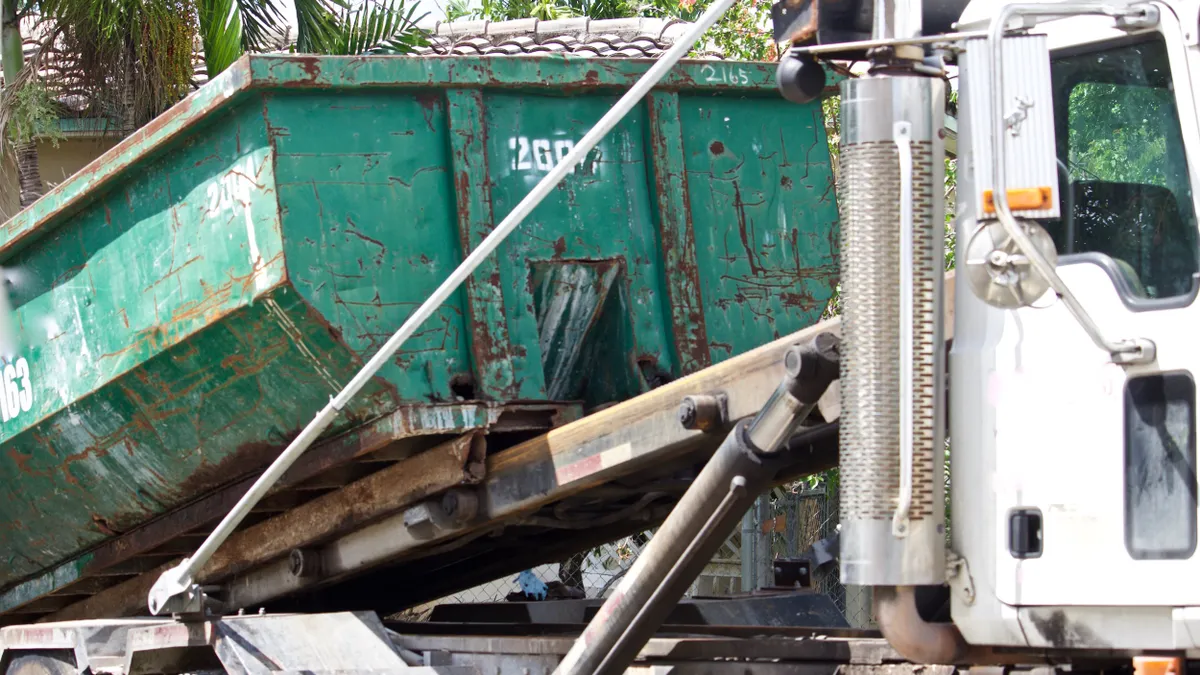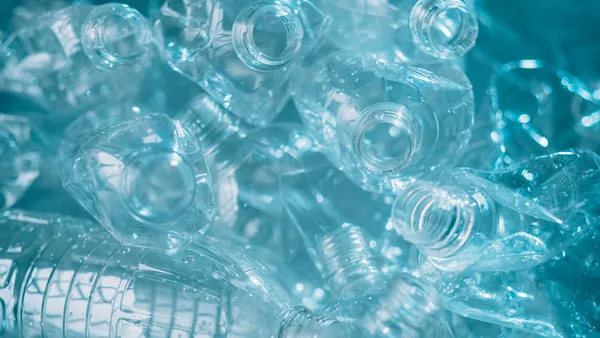Dive Brief:
- The first phase of New York’s statewide recycling needs assessment found that 84% of the state’s waste stream is “reusable or recoverable” materials. Of that, 39% is recoverable through a MRF and could be included in a future extended producer responsibility program for packaging and paper products.
- The needs assessment, conducted by RRS for the state’s Center for Sustainable Materials Management, was “undertaken in anticipation” of the potential enactment of an EPR for packaging law in the state, but also acknowledges greater potential for other waste reduction options such as organics diversion.
- The assessment also includes feedback from MRF operators and other recyclers. They urged the state legislature to “fully understand” current recycling systems before passing any EPR policies, including the complexities of commodity markets and the challenge of avoiding contamination, according to the report.
Dive Insight:
The needs assessment comes as the state legislature is again considering an EPR for packaging bill. Activity around the Packaging Reduction and Recycling Infrastructure Act, sponsored by Deborah Glick in the Assembly and Pete Harckham in the Senate, has increased in recent months.
The legislative session ends June 6, and supporters have hosted rallies and events in an effort to quickly move the bill to a vote. A similar EPR bill failed to pass last year, in part because of last-minute updates and stakeholder disagreements. Lawmakers in New York have worked for years to pass some version of EPR for packaging.
This year, the bill again has backing from the New York Department of Sanitation, which voiced its support for the bill at a press event last week alongside Beyond Plastics, a major bill supporter. New York City also passed a resolution in support.
Producers of packaging and single-use products must do their part to reduce waste and help increase the city’s waste diversion rate, said Sanitation Commissioner Jessica Tisch during the event. If the EPR bill passes, “the people who make and sell these items, which account for about 22% of the total waste in New York City, would finally have an incentive to make and use less,” she said.
Needs assessments sometimes go hand in hand with EPR planning, Colorado published a needs assessment in February as part of its EPR for packaging rollout. Maryland and Illinois do not have an EPR for packaging policy, but both considered EPR bills before settling on conducting state needs assessments that could inform a future law.
The first phase of New York’s needs assessment includes initial data on how the collection and recycling systems in the state operate, such as data on hauling and collection systems and sorting infrastructure. The New York State Department of Environmental Conservation calls for an 85% recycling rate by 2050. Future phases of the plan aim to contain more details and recommendations.
Much more of the state’s waste stream could be diverted to reuse or recycling “in today’s current recovery economy,” RRS said in the report. Only 16% of the current MSW disposal stream is made up of materials that cannot be “readily recovered.” The report said improved recycling, composting, and anaerobic digestion programs could help make strides with the remaining 84%.
The report also estimates the composition of the state’s MSW stream. It found that paper makes up about 65% of the materials handled in municipal recycling programs, followed by 15% plastic, 9% glass and 7% metals. “Any state programs or policies seeking to provide sustainable financing for recycling must include packaging and paper products,” the report said.
Some recycling processors also told RRS they were interested in programs to support market development initiatives for glass in the region, in part because glass contributes to high contamination rates when there aren’t stable end markets, according to the report.
The report also touched on the different waste diversion rules, ordinances and laws across the state, which contributes to varied recycling rates and data gathering requirements. Some recyclers “indicated that a streamlining of these rules for consistency would help their businesses,” the report said.
The initial report acknowledges that there are also “significant gaps in data” for critical aspects of recycling programs in the state. Data on specific recycling program performance and types of services offered in different regions is lacking, as well as data on recovery rates in multifamily buildings. The report also highlights difficulty getting specific information on commercial and institutional generators.
Major new programs with data reporting requirements could help fill in some gaps, such as New York City’s recent adoption of commercial waste zones, RRS said.
CSMM, who commissioned the needs assessment, is housed at the SUNY College of Environmental Science and Forestry and receives core funding from DEC for recycling and waste reduction projects.
This story first appeared in the Waste Dive: Recycling newsletter. Sign up for the weekly emails here.















